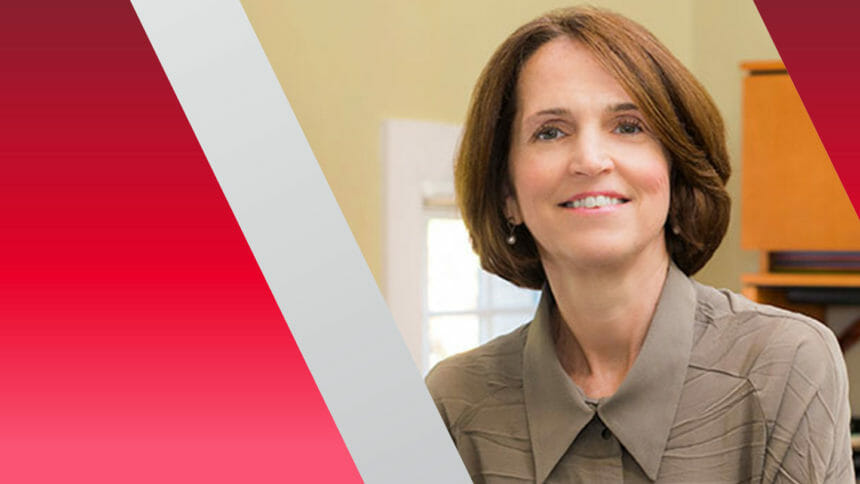
Federal lawmakers have so far failed to seize on a critical change that could shore up the aging services sector and improve access to care for the nation’s aging population, the top advocate for nonprofit providers said Thursday.
There’s been no concerted effort to reform how the federal government pays for long-term care, despite COVID-era lessons that revealed funding inadequacies and often linked pay disparities to differences in nursing home care, said Katie Smith Sloan, president and CEO of LeadingAge.
“My hope all along would be that the attention paid to long-term services and support, the good and the bad, would really be an impetus for beginning to address long-term care financing in a pretty significant way,” Sloan said in an exclusive interview with McKnight’s Long-Term Care News.
Instead, aging services remains “pretty fragile,” with plenty of looming questions about access to care, quality of care and the ability to innovate and expand in anticipation of a wave of older Americans who will soon begin to demand more care across the aging services continuum.
Coordination for care
LeadingAge in May was joined by 12 national, faith-based organizations that serve seniors in calling on President Biden to create a White House Office on Aging Policy that would create a focused vision and effectively coordinate wide-ranging federal programs that affect seniors.
Thursday, Sloan noted that the time has never been more apt for such a coordinated approach to care and services.
“We have a society that’s rapidly aging and aging issues are increasingly taking sort of an outsized portion of our federal budget and our time and attention,” she said. “It became so apparent to us that there are so many federal agencies that touch aging policy in some way and there really is no coordination, and that coordination needs to happen at the top.”
A nursing home, Sloan illustrated in an example, could be working to secure an apprentice through a Department of Labor program, training funds from the Department of Education or the Agency for Healthcare Research and Quality, or a refinance through the Department of Housing and Urban Development. In some cases, providers might get caught up unintentionally when various agencies are working at counter efforts.
Such was the case when the State Department recently enacted visa caps on nurses just ahead of a Centers for Medicare & Medicaid Services staffing minimum that will drive up the need for nursing home nurses.
“There are plenty of examples where, if the coordination happened, people could be served so much better,” Sloan said.
Sloan said precedent lies in several similar White House offices that coordinate government services or approaches to policy issues such as mental health, climate justice and education. She is hopeful that the appointment of new White House Domestic Policy Advisor Neera Tanden, who started her job Thursday, could lead to productive talks on creating such a body for aging Americans.
Meanwhile, Sloan said LeadingAge continues to “chip away” at legislative solutions Congress appears willing to work on, most notably bills that would make changes to existing processes for immigration, training and hiring pathways rather than create entirely new systems.
Staffing mandate curiosity
As are thousands of providers nationwide, Sloan said she is “curious” to see the staffing mandate rule. While LeadingAge has been generally supportive of meaningful action to ensure quality care in nursing homes, the organization has issued a list of items needed for a “real” approach to staffing standards.
Chief among those is funding, particularly as it pertains to Medicaid funding by states. But Sloan said she has heard of no Congressional initiative to increase nursing home funding or require states to do more. A debt ceiling bill may also limit how much the agency can increase funding for any rule it imposes.
LeadingAge is also seeking flexible standards that adapt to shifting resident populations and their needs; a certification system that lets providers attest to their efforts (and inability) to hire given extreme labor shortages; and waivers for local emergency conditions such as weather-related incidents.
Meanwhile, Sloan is watching debt ceiling negotiations and waiting to see how any discretionary funding limits might ultimately affect providers across the aging services continuum. The time for cuts is certainly not ideal, given the challenges of the last three years and the current operating environment, she said.
“I would characterize aging services as pretty fragile right now,” Sloan added. “I think workforce is obviously the biggest thing contributing to that, but inflation doesn’t help. [With] wage pressures, the cost of capital and uncertainty about our capital markets, there’s just an enormous amount of uncertainty our members are addressing right now while they’re also trying to figure out how to provide quality care. That’s a lot of pressure.”



